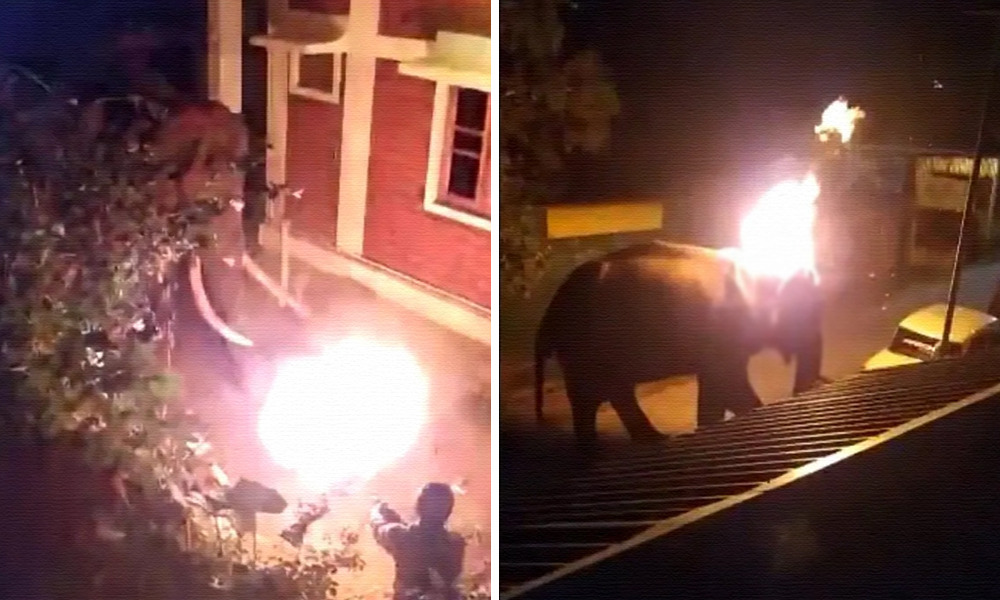
Image Credit: News18
Nearly 5 Lakh Animals Became Victims Of Crimes In Last 10 Years In India: Study
India, 21 Feb 2021 7:29 AM GMT
Editor : Rakshitha R |
Rakshitha an engineer turned passionate journalist with an inclination for poetry, creative writing, movies, fiction, mountains and seclusion. Not a part of the social process but existential.
Creatives : Abhishek M
" An engineer by profession, Abhishek is the creative producer of the team, graphic designing is his passion and travelling his get away. In more ways than one, he makes the content visually appealing."
Around 82 of the total 1000 documented assault cases were sexual abuses, more than 400 remained violent attacks causing injury to the animal and cold-blooded murders exceeded 260 counts of such cases.
As many as 4.93 lakh animals were victims of crimes committed by humans between 2010 and 2020 in India, says a report.
According to a first-of-its-kind report prepared in India by a collaborative effort of the Federation of Indian Animal Protection Organisations (FIAPO) and All Creatures Great and Small (ACGS), cases of crimes against 47 species of wild animals and birds including street, working and companion animals were reported between the said period.
The report also suggests that over 3.8 lakh cases of cruelty and violence were against mules, more than fifty thousand cases involved cruelty against cattle, and over twenty thousand involved horses and dogs.
"Our documentation does not include deaths in slaughterhouses, zoos, laboratories and the deaths of animals by accidents or human negligence," said the report.
It further said, "In the narrow category of the public space, we have counted 20,000 senseless, intentional, brutal crimes against animals over the past ten years. This works out to an average of five animal deaths per day from a violent act. The actual figure could be at least ten times higher, at 50 animal deaths per day. This would mean an average of two animals being senselessly killed every hour in India."
The study titled 'In Their Own Right - Calling for Parity in Law for Animal Victims of Crimes' reviews cases of crimes from data collected from three main sources - news reports, social media posts and animal organisations' records.
Around 82 of the total 1000 documented assault cases were sexual abuses, more than 400 remained violent attacks causing injury to the animal and cold-blooded murders exceeded 260 counts of such cases. In the last 5 years, over 4500 dogs were killed by mass culling, while 413 canines and 310 other non-human mammals were murdered.
However, it concluded that about 70% of the documented cases were never picked up by the news media and only about 5 canine murders between 2016-2020 got wide attention.
The gross misrepresentation of the 'severity of the crime'
A chilling observation in the study was that crimes of cruelty under the Prevention of Cruelty to Animals Act, 1960, were clubbed in a miscellaneous category of Special and Local Laws in the annually published National Crime Records Bureau (NCRB) reports that don't even recognize animals as victims of cruelty.
Moreover, the problem with the existing record-keeping guidelines is that the quantum of punishment is hardly ever proportionate to the crime. Any offence of cruelty under the PCA amounts to an Rs. 50 fine, regardless of nature. The term 'cruelty' is so vague, at least by definition, that it can be used to define anything from kicking an animal to sexually assaulting or even killing the animal in some cases. The same is addressed by the report through a Severity Index of Crimes Against Animals which attempts to represent the different kinds of violence on 5 levels based on the nature extent.
Scale 1: Direct or indirect and inadvertent or uninformed participation in animal cruelty like buying a puppy.
Scale 2: Neglect of a companion animal or condoning animal cruelty.
Scale 3: Direct harm through hitting, physically restraining or starving an animal. (Hurt)
Scale 4: Physically hurting, beating or torture of an animal. (Grievous Hurt)
Scale 5: Sexual abuse or violence with clear intent to kill the animal. (Violence/Torture)
Distinction or parity of violence and punishment, as exists in the case of crimes against humans, has become increasingly important with the rise in cases of dogs and cats being burned alive or thrown from high rise buildings, etc.
The report in its recommendations on a legislative level calls for constitutional amendments to make "Right to Life" constitutional for non-human animals and supplement the constitutional duty of compassion towards animals [Article 51 A (g)], along with putting an end to laws excluding stray and vermin animals from protection from crimes among other key recommendations.
Administrative changes suggested include a permanent public record of crimes against animals to be maintained and published annually by NCRB and setting up of a dedicated Ministry to include the Animal Welfare Board of India (currently under Ministry of Animal Husbandry and Fisheries) to oversee the aspects of animal rights, protection and welfare besides bringing under its jurisdiction the subjects of "Prevention and Cruelty to Animals."
Also Read: 'Air India Staff Humiliated Me', Says Shooter Manu Bhaker, Airline Denies Charges
 All section
All section














